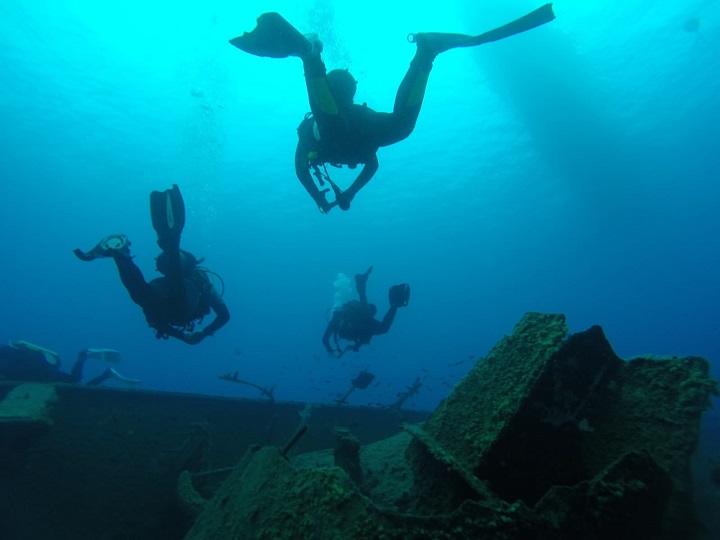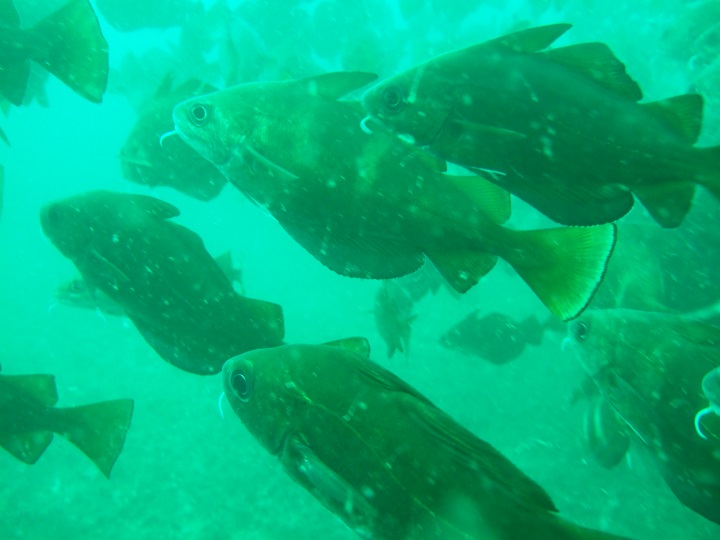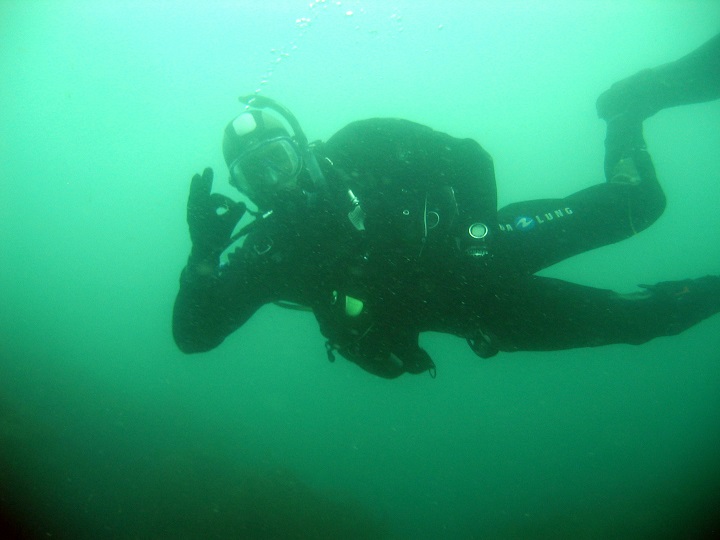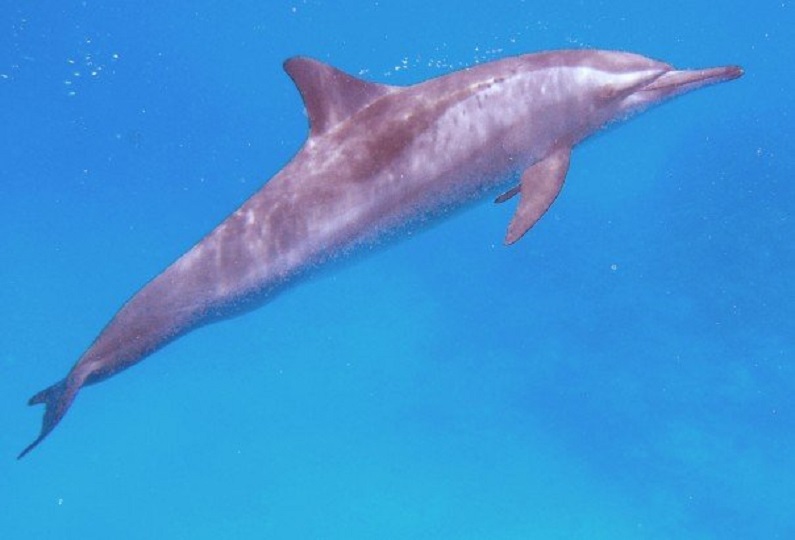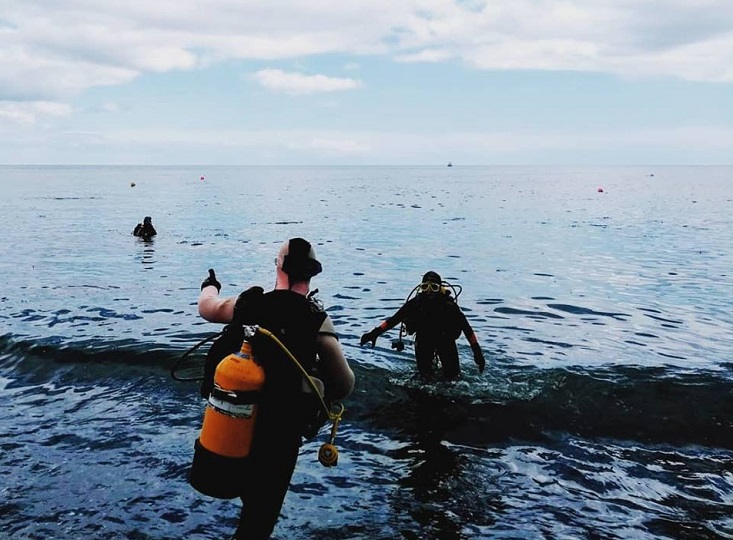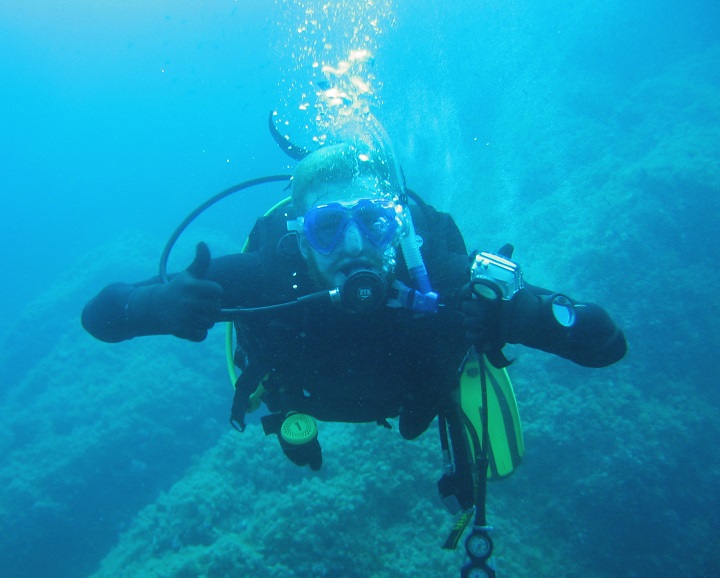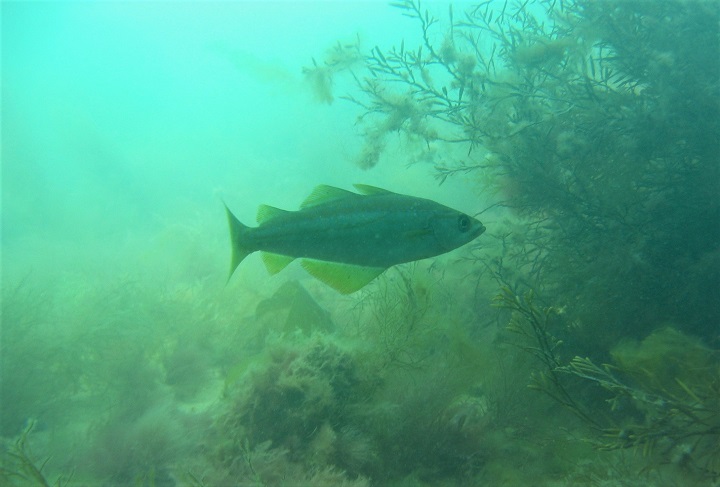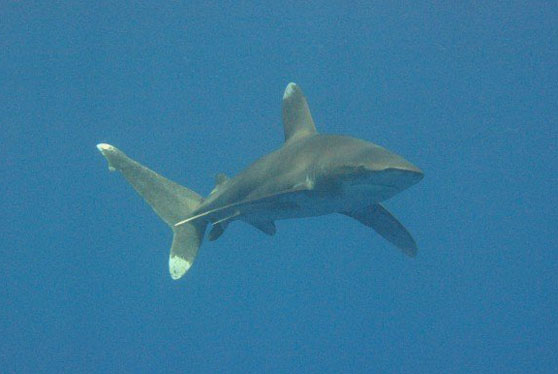Scuba diving is an exhilarating activity that allows us to explore the breathtaking wonders of the underwater world. To ensure a safe and enjoyable diving experience, the choice of equipment plays a vital role. While traditional scuba diving masks and regulators have long been the norm, full-face masks have gained popularity in recent years. In this blog post, we will explore the pros and cons of using scuba diving full-face masks over the standard mask and regulator setup.
What is a full-face mask?
A full-face diving mask is a type of scuba diving mask that seals the diver's whole face from the water and contains a mouthpiece, demand valve or constant flow gas supply that provides the diver with breathing gas, this allows you to breathe through your nose as well as your mouth and allows you to talk as you have nothing in your mouth so you can use underwater communication equipment with it.
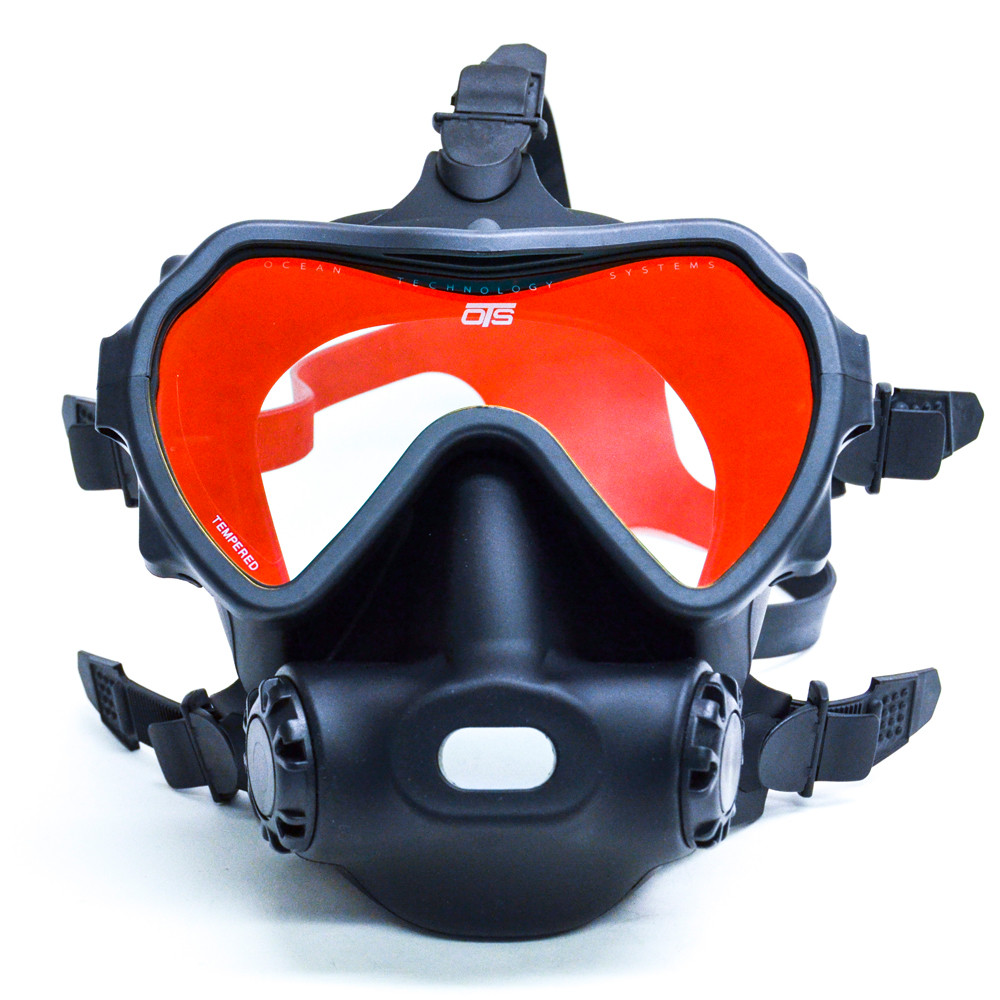
Pros of Using Scuba Diving Full Face Masks:
1. Enhanced Comfort and Visibility:
One of the most notable advantages of full-face masks is their unparalleled comfort. Unlike traditional masks, which cover only the eyes and nose, full-face masks encompass the entire face, allowing for a more secure and comfortable fit. Additionally, these masks offer a broader field of vision, providing divers with an unobstructed view of their surroundings.
2. Improved Communication:
Communicating underwater can be a challenge, especially when using hand signals. Full-face masks feature an integrated communication system that enables divers to talk with their fellow divers via an attached communication unit or a built-in microphone. This feature enhances safety by facilitating real-time communication between divers and dive buddies.
3. Reduced Jaw Fatigue:
Standard regulators require divers to hold the mouthpiece in their mouths throughout the dive. This can cause jaw fatigue, especially during longer dives. Full-face masks eliminate this problem as the regulator is integrated into the mask, allowing divers to breathe naturally through their nose and mouth. This feature enhances endurance and overall comfort during extended diving sessions.
4. Protection and Safety:
Unlike traditional masks, full-face masks provide comprehensive protection for the face, making them ideal for divers who are prone to water leakage, cold water exposure, or facial injuries. The sealed design prevents water from entering the mask, ensuring a more comfortable and secure diving experience. In addition, some full-face masks come equipped with a second-stage regulator attached, offering increased safety during emergencies.
Cons of Using Scuba Diving Full Face Masks:
1. Price:
Full-face masks tend to be more expensive than traditional masks and regulators. This can deter many divers from investing in them, especially those who are just starting their scuba diving journey or who have a tight budget. However, advanced technology and increasing popularity may bring prices down in the future.
2. Buoyancy Control:
Full-face masks, due to their larger size and added features, can affect buoyancy control underwater. Divers must be mindful of their buoyancy and compensate for the extra equipment attached to their faces. Proper training and practice are necessary to ensure optimal buoyancy control while wearing a full face mask.
3. Limited Training and Skill Requirement:
Using a full-face mask requires specific training and certification. It is essential to receive proper instruction on how to use and maintain the mask, as well as how to handle emergencies. This can add a level of complexity for those who are new to scuba diving or have been using traditional masks and regulators for years.
4. CO2 build-up:
Because fo the larger space into which you breathe out while using a full face mask, there is an increased risk of CO2 buildup in your mask and thus in your lungs. this is a bad thing and most new full-face masks have valves to help reduce this risk, and other there are procedures you learn on your course to limit the risk even further but it is still a greater risk than with using a standard scuba diving regulator.
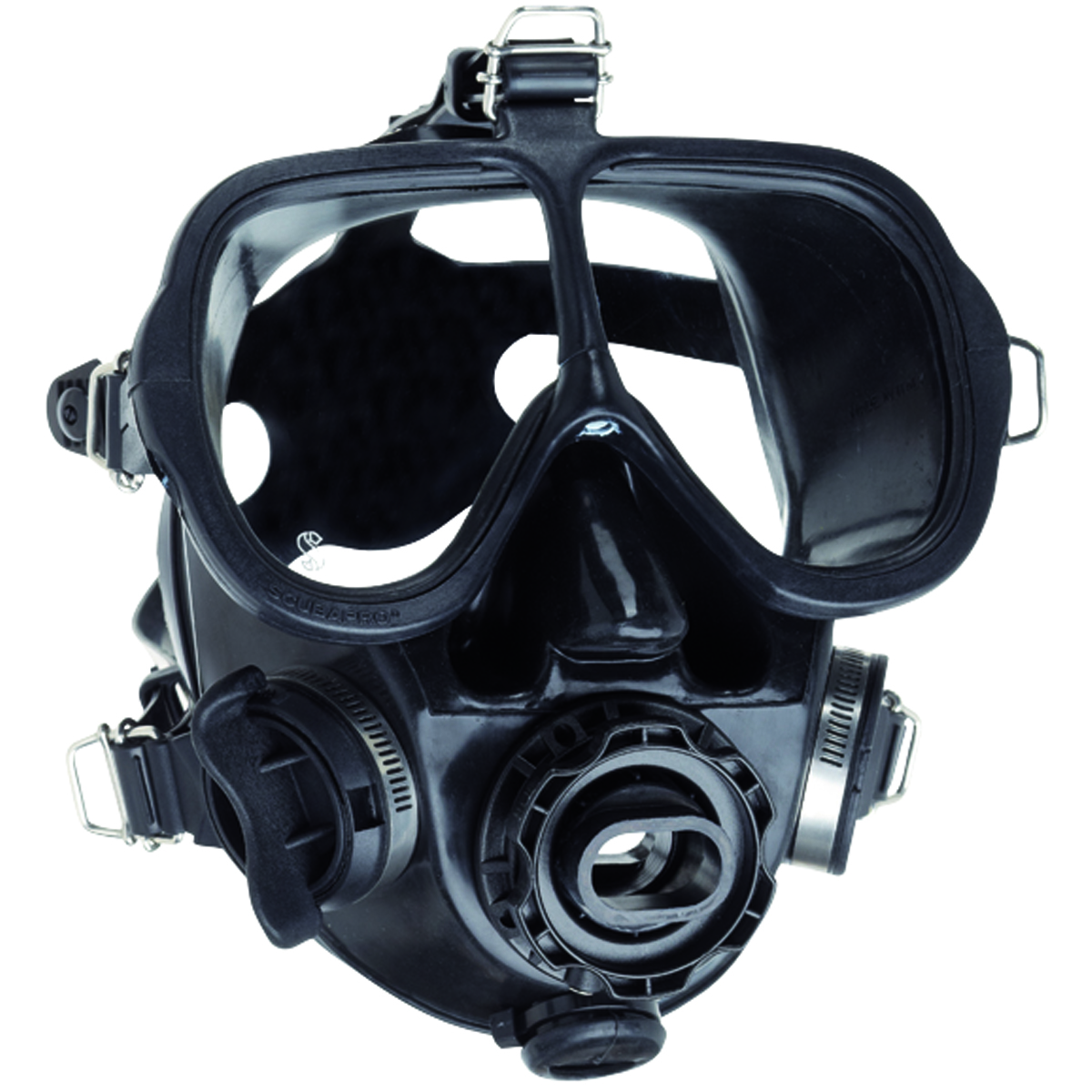
Conclusion:
Full-face masks offer a range of benefits over traditional masks and regulators, including enhanced comfort, improved visibility, better communication, and increased safety. However, it is crucial to consider the higher cost, potential buoyancy control issues, and the need for specialized training. By weighing the pros and cons, divers can determine if a full-face mask is the right choice for their needs and preferences. Regardless of the equipment chosen, safety and proper training should always be a priority for an enjoyable and safe diving experience.
What is a full-face mask?
A full-face diving mask is a type of scuba diving mask that seals the diver's whole face from the water and contains a mouthpiece, demand valve or constant flow gas supply that provides the diver with breathing gas, this allows you to breathe through your nose as well as your mouth and allows you to talk as you have nothing in your mouth so you can use underwater communication equipment with it.

Pros of Using Scuba Diving Full Face Masks:
1. Enhanced Comfort and Visibility:
One of the most notable advantages of full-face masks is their unparalleled comfort. Unlike traditional masks, which cover only the eyes and nose, full-face masks encompass the entire face, allowing for a more secure and comfortable fit. Additionally, these masks offer a broader field of vision, providing divers with an unobstructed view of their surroundings.
2. Improved Communication:
Communicating underwater can be a challenge, especially when using hand signals. Full-face masks feature an integrated communication system that enables divers to talk with their fellow divers via an attached communication unit or a built-in microphone. This feature enhances safety by facilitating real-time communication between divers and dive buddies.
3. Reduced Jaw Fatigue:
Standard regulators require divers to hold the mouthpiece in their mouths throughout the dive. This can cause jaw fatigue, especially during longer dives. Full-face masks eliminate this problem as the regulator is integrated into the mask, allowing divers to breathe naturally through their nose and mouth. This feature enhances endurance and overall comfort during extended diving sessions.
4. Protection and Safety:
Unlike traditional masks, full-face masks provide comprehensive protection for the face, making them ideal for divers who are prone to water leakage, cold water exposure, or facial injuries. The sealed design prevents water from entering the mask, ensuring a more comfortable and secure diving experience. In addition, some full-face masks come equipped with a second-stage regulator attached, offering increased safety during emergencies.
Cons of Using Scuba Diving Full Face Masks:
1. Price:
Full-face masks tend to be more expensive than traditional masks and regulators. This can deter many divers from investing in them, especially those who are just starting their scuba diving journey or who have a tight budget. However, advanced technology and increasing popularity may bring prices down in the future.
2. Buoyancy Control:
Full-face masks, due to their larger size and added features, can affect buoyancy control underwater. Divers must be mindful of their buoyancy and compensate for the extra equipment attached to their faces. Proper training and practice are necessary to ensure optimal buoyancy control while wearing a full face mask.
3. Limited Training and Skill Requirement:
Using a full-face mask requires specific training and certification. It is essential to receive proper instruction on how to use and maintain the mask, as well as how to handle emergencies. This can add a level of complexity for those who are new to scuba diving or have been using traditional masks and regulators for years.
4. CO2 build-up:
Because fo the larger space into which you breathe out while using a full face mask, there is an increased risk of CO2 buildup in your mask and thus in your lungs. this is a bad thing and most new full-face masks have valves to help reduce this risk, and other there are procedures you learn on your course to limit the risk even further but it is still a greater risk than with using a standard scuba diving regulator.

Conclusion:
Full-face masks offer a range of benefits over traditional masks and regulators, including enhanced comfort, improved visibility, better communication, and increased safety. However, it is crucial to consider the higher cost, potential buoyancy control issues, and the need for specialized training. By weighing the pros and cons, divers can determine if a full-face mask is the right choice for their needs and preferences. Regardless of the equipment chosen, safety and proper training should always be a priority for an enjoyable and safe diving experience.
.png)



